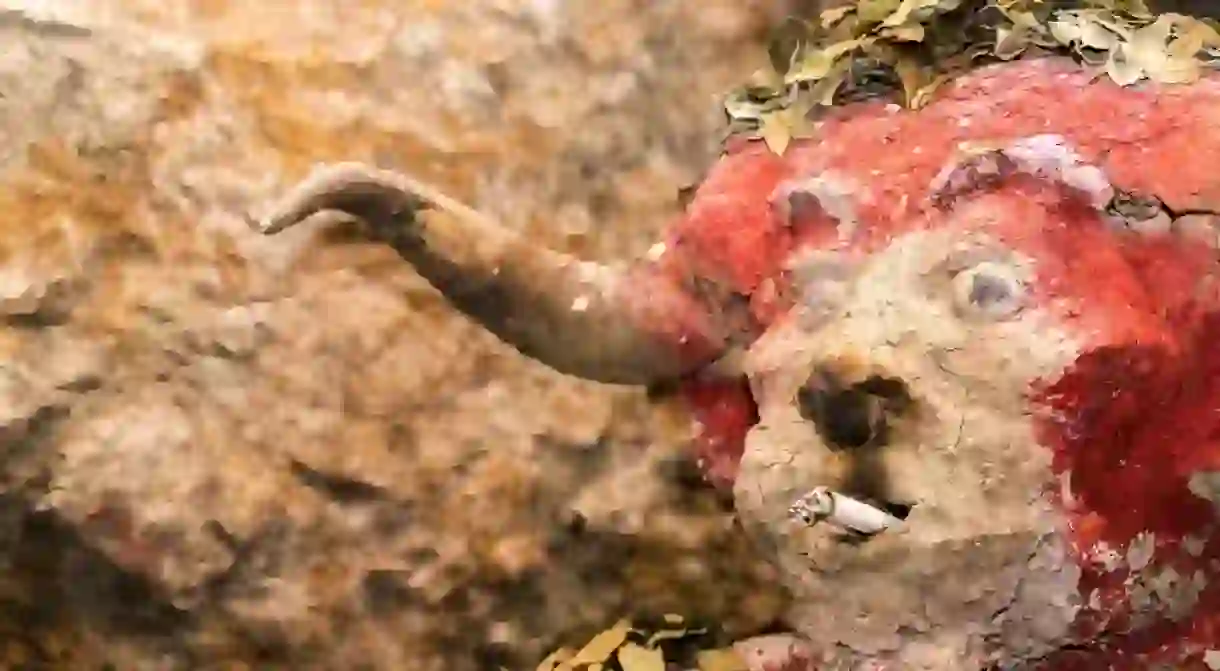10 Things to Know Before Visiting Cerro Rico, Potosi

As an essential stop on the Bolivian backpacker trail, a trip down the notorious Cerro Rico mine is as humbling as it is insightful. Once the primary source of income of the marauding Spanish New World Empire, the scarce minerals that remain are tirelessly chipped away by some of the world’s most underprivileged workers. From horrifying historical facts to essential logistical info, here are 10 things you need to know before delving deep into the mines.
The Incas found it first
Long before the arrival of the Spanish, the Incas discovered Cerro Rico‘s potential and forced the local indigenous inhabitants to work underground in a system of slavery known as mit’a.
The mine is prophetic
The Incas were planning on increasing mining capacity to fund their colonial efforts until a booming cry from below relayed a harrowing premonition. According to legend, a voice sprang forth from the depths demanding the Incas abandon the mine because the silver was intended for “others,” presumably the Spanish who would arrive sometime later. Consequently, their nearby settlement was named Ptojsi, after the Quechua word for “spring forth.”

It was once the world’s biggest industrial complex
During its heyday in the 17th century, up to 60% of the Earth’s silver was mined from Cerro Rico. Such was the abundance that the streets were said to be paved with silver and the expression “Vale un Potosi” (to be worth a Potosi) came about, which is still in use today.
Millions have perished underground
The book Las venas abiertas de América Latina (The Open Veins of Latin America), by renowned Uruguayan journalist Eduardo Galeano, states that up to 6 million slaves died while working the mines during colonial times.

It’s terrifyingly cramped
Travelers who suffer from claustrophobia should reconsider because the tours require spending several hours in dark and narrow tunnels with no natural light. Claustrophobia aside, travelers report feeling deeply saddened upon witnessing the horrifying working conditions these valiant miners must face every day.
The miners are still dying at an alarming rate
Although conditions are undoubtedly better than under Spanish rule, they remain far from ideal. On average, 14 miners die each month, mostly from a lung condition called scoliosis which is contracted from inhaling deadly dust particles. The average life expectancy of a Cerro Rico miner is just 40.

Gifts are welcomed
Before entering into the mines, tourists are taken to a miner’s market where they can purchase dynamite, coca leaves, alcohol and cigarettes to give to the miners.
It spawned some of Bolivia’s colorful folkloric dance
Tinku, a dance which represents fighting, is said to have originated from bored slaves who would spar each other to pass the time. Likewise, the black masks and the bell-clad boots of Morenada symbolize African slaves who were forced to drag around a ball and chain.

The locals want visitors
Some travelers may feel reluctant to indulge in “poverty tourism”, a sector that has caused controversy throughout the favelas of Rio and the slums of Mumbai. Rest assured, however, that the workers appreciate the extra income, and many tours are led by former miners themselves. Koala Tours is a well-regarded outfit and charge a standard rate of 120 BOB (US$17).
Expect to run into the devil
To ensure safety in these horrid conditions, workers have created effigies of El Tio, a devil-like figure who safeguards the underworld. In order to keep him happy, miners visit daily with offerings of coca leaves, alcohol, and cigarettes.














